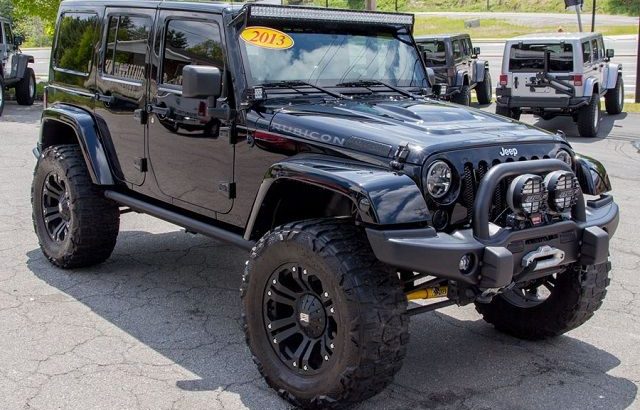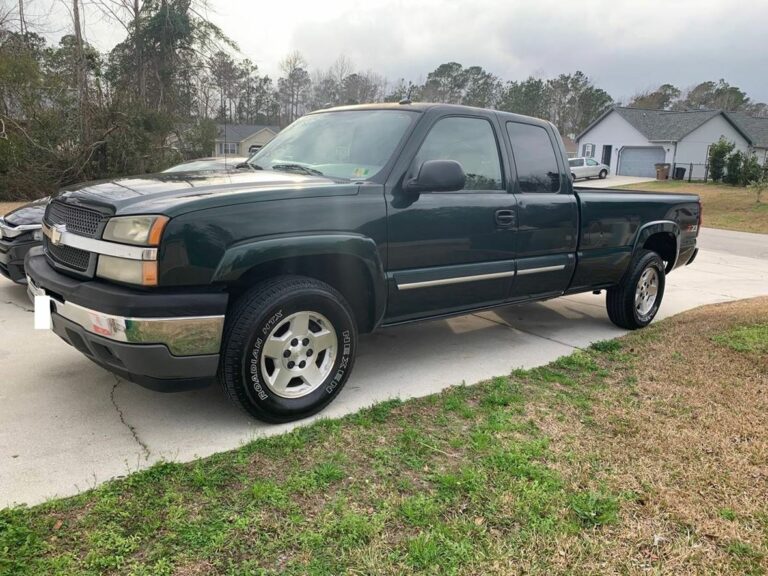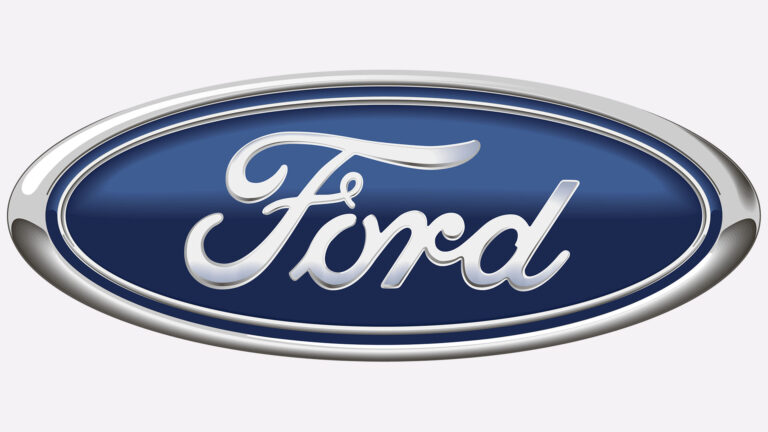COE Trucks For Sale: Navigating the Market for Efficient Commercial Vehicles
COE Trucks For Sale: Navigating the Market for Efficient Commercial Vehicles cars.truckstrend.com
In the bustling world of commercial transportation, efficiency, maneuverability, and payload capacity are paramount. Among the diverse array of trucks available, Cab Over Engine (COE) trucks stand out as a uniquely designed solution tailored to meet these demanding requirements, particularly in urban and densely populated environments. If you’re in the market for a commercial vehicle that offers exceptional visibility, a compact footprint, and impressive cargo capabilities, then exploring COE trucks for sale is a strategic move. This comprehensive guide will delve into everything you need to know about these specialized vehicles, from their fundamental design to practical buying considerations, helping you make an informed decision.
What Exactly Are COE Trucks? An Engaging Introduction
COE Trucks For Sale: Navigating the Market for Efficient Commercial Vehicles
COE stands for Cab Over Engine, a descriptive term that precisely defines the truck’s unique architectural layout. Unlike conventional trucks where the engine is positioned in front of the driver, housed under a prominent hood, COE trucks place the driver’s cab directly over the engine. This innovative design eliminates the need for a lengthy hood, allowing for a significantly shorter overall vehicle length while maintaining, or even increasing, the usable cargo space on the chassis.
The origins of COE designs can be traced back to early 20th-century Europe and Japan, where narrow city streets and stringent length regulations necessitated highly compact yet capable commercial vehicles. Over time, their advantages in urban logistics, waste management, and specialized applications became evident globally. For businesses operating in congested areas, making deliveries to tight loading docks, or needing to maximize payload within specific vehicle length limits, COE trucks are not just an option—they are often the ideal, if not essential, solution. They represent a smart investment for businesses prioritizing operational agility and space optimization.
The Distinct Advantages: Why Choose a COE Truck?
The unique design of COE trucks translates into a host of compelling benefits that make them highly desirable for a wide range of commercial applications. Understanding these advantages is key to appreciating their value proposition.
-
Unmatched Maneuverability: This is arguably the most significant advantage of COE trucks. By positioning the cab over the engine, the wheelbase can be shorter relative to the overall vehicle length compared to conventional trucks. This results in a tighter turning radius, making COE trucks exceptionally agile in urban environments, narrow alleys, crowded construction sites, and busy loading docks. They can navigate tight corners and perform intricate maneuvers that would be impossible for their conventional counterparts.
-
Superior Visibility: With the driver seated directly above the front axle and closer to the front bumper, COE trucks offer an expansive field of vision. The large, often panoramic, windshield provides an unobstructed view of the road ahead, pedestrians, and surrounding traffic. This enhanced visibility significantly improves safety, especially in bustling city streets where hazards can appear suddenly. Drivers can more easily spot obstacles, parked cars, or pedestrians, reducing the risk of accidents.
-
Maximized Cargo Space and Payload Efficiency: The absence of a long hood means that more of the truck’s overall length can be dedicated to the cargo body. This allows for the installation of longer truck bodies (e.g., box, flatbed, refuse) on a relatively shorter wheelbase, maximizing the amount of cargo that can be carried within legal length restrictions. For businesses transporting bulky goods or requiring significant volume, this direct translation of vehicle length into usable cargo space is invaluable. Furthermore, the compact design often results in a lighter chassis, which can translate into a higher payload capacity.

-
Ease of Access for Maintenance (Tilting Cab): While the engine is under the cab, modern COE designs incorporate a hydraulic tilting cab mechanism. This allows the entire cab to tilt forward, providing full and unobstructed access to the engine, transmission, and other critical components for maintenance and repairs. This design simplifies routine checks and major overhauls, potentially reducing downtime.

Compact Footprint: For businesses with limited parking or yard space, the shorter overall length of a COE truck is a distinct advantage. They occupy less real estate, making them easier to store and park, especially in urban depots or multi-vehicle fleets.

Common Applications and Industries for COE Trucks
The versatility of COE trucks makes them a preferred choice across numerous industries and for a variety of specialized tasks. Their design excels where space is a premium and maneuverability is critical.
- Urban Delivery and Logistics: From parcel delivery services to food and beverage distribution, COE box trucks and refrigerated trucks are ubiquitous in city centers. Their ability to navigate congested streets and pull up to curbside loading zones makes them indispensable.
- Waste Management: Refuse trucks (garbage trucks) are perhaps one of the most iconic applications of COE design. Their tight turning radius is essential for maneuvering through residential neighborhoods and cul-de-sacs, while the forward position of the cab allows for optimal visibility when operating collection arms.
- Construction and Municipal Services: Dump trucks, concrete mixers, and specialized utility trucks often utilize COE chassis, particularly for projects in urban areas or confined job sites where space is limited. Their ability to maneuver into tight spots for material delivery or utility work is crucial.
- Moving and Relocation Services: Many rental moving trucks are based on COE chassis due to their ease of driving and generous cargo capacity relative to their length, appealing to both professional movers and DIY renters.
- Specialty Vehicles: This category includes everything from street sweepers and tow trucks to certain types of fire apparatus and mobile service units that require a compact yet powerful platform.
Types of COE Trucks and Body Configurations
COE trucks are available in various sizes and can be fitted with a wide array of body types to suit specific operational needs.
-
By Gross Vehicle Weight Rating (GVWR):
- Light-Duty COE: Typically ranging from 10,000 to 19,500 lbs GVWR, these are often seen as box trucks for last-mile delivery. Examples include Isuzu NPR, Hino 155, and Mitsubishi Fuso Canter.
- Medium-Duty COE: With GVWRs from 19,501 to 33,000 lbs, these are workhorses for heavier urban delivery, smaller refuse routes, or specialized service. Examples include Hino 268, Fuso FE, and some Freightliner M2 variants (though the M2 is also available in conventional).
- Heavy-Duty COE: Less common as tractors in North America today, but still prevalent for severe-duty applications like large refuse haulers, concrete pumpers, or highly specialized vocational trucks, with GVWRs often exceeding 33,000 lbs. Examples include Peterbilt 320 and Mack LEU.
-
By Body Type:
- Box Trucks/Dry Vans: The most common configuration, used for general cargo transport, deliveries, and moving services.
- Refrigerated Trucks (Reefers): Equipped with refrigeration units for transporting perishable goods.
- Dump Trucks: Used for hauling and dumping loose materials like sand, gravel, or demolition debris.
- Refuse Trucks: Highly specialized for waste collection, featuring compaction mechanisms.
- Flatbeds/Stake Trucks: For transporting oversized or irregularly shaped cargo, with or without removable stakes.
- Service/Utility Trucks: Customized with compartments and specialized equipment for technicians and tradespeople.
- Roll-off Trucks: Designed to carry and unload large, detachable waste containers.
Important Considerations When Buying a Used COE Truck
Purchasing a used COE truck can be a cost-effective alternative to buying new, but it requires diligent research and inspection. Here’s what to look for:
- Overall Condition and Rust: Thoroughly inspect the frame, cab, and body for signs of rust, especially in regions that use road salt. Pay attention to the undercarriage, frame rails, crossmembers, and cab mounts. Surface rust is manageable, but extensive structural rust can be a deal-breaker.
- Mileage and Engine Hours: While high mileage isn’t always a disqualifier for well-maintained commercial vehicles, it’s a critical factor. Look for trucks with detailed service records that demonstrate consistent maintenance. For vocational trucks, engine hours can be as important as mileage.
- Maintenance Records: Request a complete maintenance history. This provides invaluable insight into how well the truck has been cared for, identifying recurring issues or major repairs.
- Engine and Transmission: Check for fluid leaks, unusual noises, excessive smoke from the exhaust, and proper fluid levels. Test the transmission through all gears, both forward and reverse, ensuring smooth engagement and no slipping. Diesel engines are common in medium to heavy-duty COEs, known for longevity but requiring specific maintenance. Gas engines are found in lighter-duty models.
- Brakes and Tires: Inspect brake pads, rotors/drums, and air lines (if applicable). Check tire tread depth and look for uneven wear patterns, which could indicate alignment issues.
- Cab Tilt Mechanism: Ensure the hydraulic tilting mechanism operates smoothly, without leaks, and that all safety locks engage correctly. This is vital for maintenance access.
- Electrical System and HVAC: Test all lights, gauges, wipers, power windows, and the heating/air conditioning system. Electrical issues can be notoriously difficult and expensive to diagnose and repair.
- Professional Inspection: Always, always, always invest in a pre-purchase inspection by a qualified, independent commercial truck mechanic. Their expertise can uncover hidden problems that you might miss.
Where to Find COE Trucks For Sale
The market for used COE trucks is robust, offering several avenues for potential buyers:
- Commercial Truck Dealerships: These offer the most curated selection, often with certified pre-owned options, financing services, and potential warranties. They typically have a range of makes and models, and their sales teams can guide you through options.
- Online Marketplaces: Websites like TruckPaper.com, CommercialTruckTrader.com, and eBay Motors specialize in commercial vehicle listings. These platforms offer vast selections and allow you to filter by make, model, year, price, and location.
- Commercial Vehicle Auctions: Auctions (online or in-person) can yield excellent deals, especially from fleet liquidations or government surplus sales. However, purchases are typically "as-is," with limited opportunity for inspection, making them riskier.
- Private Sellers: Finding a private seller can sometimes result in a lower price due to the absence of dealer markups. However, this route carries more risk, as there are no guarantees or support after the sale, and due diligence on your part is even more crucial.
- Fleet Sales and Leasing Companies: Some large companies and leasing outfits regularly cycle out older vehicles, offering well-maintained trucks directly to the public.
Practical Advice and Actionable Insights for Buying
- Define Your Needs Precisely: Before you even start looking, clearly outline what you need the truck for. What GVWR is required? What body type? What kind of routes will it run (urban, highway)? What’s your budget for the purchase and ongoing operational costs?
- Set a Realistic Budget: Beyond the purchase price, factor in sales tax, registration fees, insurance, potential repairs or upgrades, and initial maintenance. Don’t forget the cost of fuel and ongoing maintenance.
- Prioritize the Inspection: As mentioned, a professional inspection is non-negotiable. It’s a small investment that can save you thousands down the line.
- Verify Documentation: Ensure the seller has a clear title, VIN matches the documentation, and any lienholders are properly addressed. Review service records meticulously.
- Test Drive Thoroughly: Don’t just drive it around the block. Take it on a route similar to what you’ll use it for. Pay attention to engine performance, transmission shifting, braking, steering, and any unusual noises or vibrations. Test all lights, gauges, and accessories.
- Negotiate Smartly: Research comparable trucks to understand fair market value. Be prepared to walk away if the deal doesn’t feel right. Highlight any issues found during inspection to justify a lower offer.
- Consider Financing Options: If not paying cash, explore financing through commercial lenders, credit unions, or even the dealership. Understand the terms, interest rates, and any associated fees.
Potential Challenges and Solutions
While COE trucks offer many advantages, potential challenges exist, particularly with used models.
- Parts Availability for Older Models: For very old or less common COE makes/models, finding specific parts can be challenging. Solution: Research commonality of parts before buying. Stick to popular brands (Isuzu, Hino, Fuso) for better parts availability.
- Specialized Maintenance: While cab tilt offers access, some mechanics might be less familiar with COE-specific quirks compared to conventional trucks. Solution: Identify reputable commercial truck repair shops experienced with COE vehicles in your area.
- Perceived Driver Comfort: Traditionally, COEs were seen as less comfortable for long hauls due to the engine noise/heat and direct ride. Modern COEs have significantly improved in this regard. Solution: For long-distance applications, a COE might not be ideal, but for urban/regional routes, modern COEs are perfectly suitable. Test drive for comfort.
- Finding the Right Configuration: Due to their specialized nature, finding a used COE with the exact body type, engine, and features you need might take time. Solution: Be patient and cast a wide net across different sellers and online platforms. Utilize specific search filters.
COE Trucks For Sale: Representative Price Guide
It’s crucial to understand that the price of a used COE truck varies dramatically based on numerous factors: make, model, year, mileage, overall condition, engine type, transmission, specific body configuration (box, dump, refuse, etc.), added features (e.g., liftgate, PTO), and regional market demand. The table below provides estimated ranges to give you a general idea, but these are not definitive prices and should only be used as a starting point for your research. Always conduct your own market analysis for specific trucks.
| Category | Typical GVWR Range (lbs) | Example Makes/Models | Estimated Used Price Range (USD) | Key Factors Influencing Price |
|---|---|---|---|---|
| Light-Duty Box/Delivery | 10,000 – 19,500 | Isuzu NPR, Hino 155, Fuso FE | $15,000 – $45,000 | Age (5-15 years old), mileage (100k-300k), box size, liftgate, condition |
| Medium-Duty Chassis Cab | 19,501 – 26,000 | Hino 268, Fuso FE, UD | $20,000 – $60,000 | Age (5-12 years old), mileage (150k-400k), engine type, cab features |
| Medium-Duty Refuse/Dump | 26,001 – 33,000+ | UD, Freightliner M2 (COE), Hino | $35,000 – $90,000+ | Age (5-15 years old), specific body type (packer, dump), PTO, condition, specialized equipment |
| Heavy-Duty Specialty | 33,001 – 60,000+ | Peterbilt 320, Mack LE | $50,000 – $150,000+ | Highly specialized equipment, severe duty application, age, condition, low hours |
| Older/High Mileage/ "As-Is" | Varies | Varies (all types) | $5,000 – $20,000 | Significant wear, potential for major repairs, often requires work, sold by owner/auction |
Disclaimer: These prices are estimates for the North American used truck market as of late 2023 / early 2024 and are subject to change. Actual prices will vary based on individual vehicle specifics, market demand, and seller.
Frequently Asked Questions (FAQ) About COE Trucks
Q1: What does COE stand for?
A1: COE stands for Cab Over Engine, referring to the design where the driver’s cab is positioned directly above the engine.
Q2: Are COE trucks suitable for long-haul trucking?
A2: Generally, no. COE trucks are primarily designed for urban, regional, and vocational applications where maneuverability and compact size are crucial. For long-haul, conventional trucks with their longer wheelbases and more spacious cabs are typically preferred for driver comfort and stability.
Q3: What are the main advantages of COE trucks?
A3: Key advantages include superior maneuverability in tight spaces, excellent visibility for the driver, maximized cargo space relative to overall length, and easier engine access for maintenance via a tilting cab.
Q4: Are COE trucks difficult to maintain?
A4: Not necessarily difficult, but access to the engine requires tilting the cab, which is a specific procedure. Once the cab is tilted, access to components is often better than in a conventional truck. Parts availability is generally good for popular models.
Q5: What brands commonly manufacture COE trucks?
A5: In North America, some of the most prominent brands manufacturing COE trucks include Isuzu, Hino, Mitsubishi Fuso, and for heavier-duty vocational applications, brands like Peterbilt and Mack (though their COE offerings are more specialized).
Q6: How do I check the condition of a used COE truck before buying?
A6: Conduct a thorough visual inspection for rust, leaks, and damage. Check tires, brakes, and all fluid levels. Test drive the truck to assess engine, transmission, and braking performance. Most importantly, hire a qualified, independent commercial truck mechanic for a pre-purchase inspection.
Q7: Is financing available for used COE trucks?
A7: Yes, financing is widely available for used commercial trucks, including COEs. Options include commercial truck dealerships, independent commercial lenders, credit unions, and sometimes even traditional banks. Loan terms and rates will depend on your creditworthiness, the age and condition of the truck, and the lender.
Conclusion
COE trucks represent a smart and efficient solution for a wide array of commercial operations, particularly those navigating the challenges of urban environments. Their distinctive design offers unparalleled maneuverability, superior visibility, and optimized cargo capacity, making them invaluable assets for businesses in logistics, waste management, construction, and more. When considering COE trucks for sale, a thorough understanding of their benefits, common applications, and the critical considerations for purchasing a used model is essential. By meticulously researching, inspecting, and evaluating your options, you can secure a reliable and efficient COE truck that will serve as a powerful engine for your business’s success, driving both productivity and profitability.






